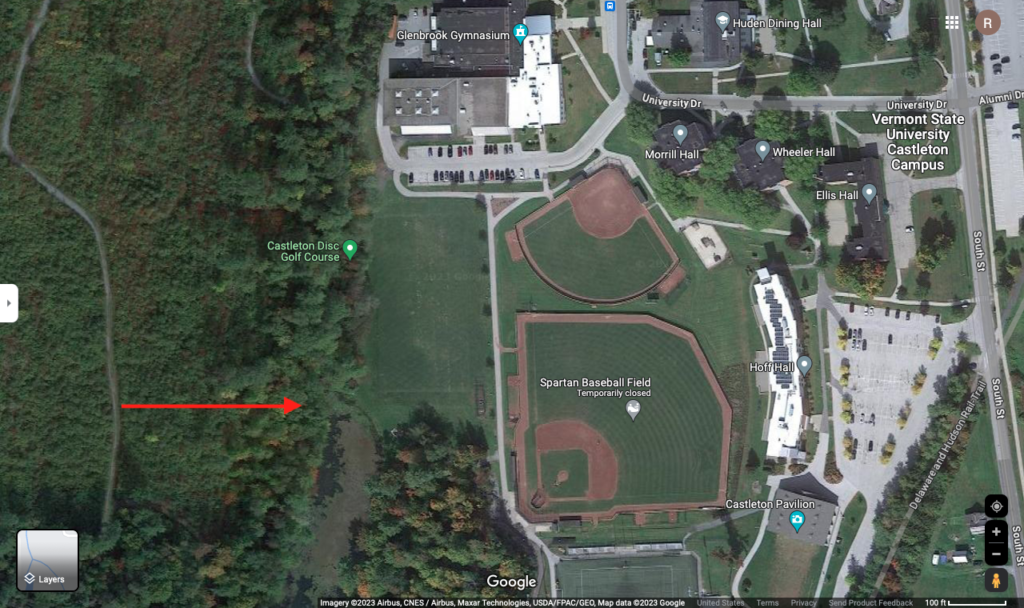On October 3, 2023 a woman was walking with her dog on a path regularly used by students and staff on the Castleton University campus when her German shepherd, Gus stepped into a body-gripping trap set for “nuisance” beavers just seven feet off a university trail. The trap had been set a day before by a trapper referred to the University by a Vermont Fish & Wildlife warden. The University was responding to long-term problems with a manmade dam on a pond surrounded by public trails. At least three beavers had already been trapped using similar body-gripping “kill” traps which are known to take up to five minutes to kill beavers and other aquatic animals. Traps for beaver are commonly set immediately off of roads and culverts where beavers are active and near beaver dams. The trap that caught the 100-pound pet was a 330 body-grip trap that was set on the pond’s edge in inches of water. The trap caught the dog on the front leg and fractured two bones and caused other serious, but not life threatening injuries.

Recent nuisance trapping for beavers in Castleton and West Pawlet has seen deadly body-gripping traps being set just feet off of trails regularly used by dog walkers. These “drowning sets” are intended to catch beavers who are either crushed in the body-grip trap, or drown when the trap drags them underwater. The Vermont Fish & Wildlife Department (VFW) is recommending changes to current trapping practices, as directed by the Legislature in Act 159 which seeks to reduce the incidents of domestic pet captures and reduce the level of suffering experienced by wildlife caught in Vermont traps. The Green Mountain state boasts a population of approximately 300 active recreational trappers. Last year, fifteen pets were accidentally caught in traps, the three that died were caught in body-gripping traps. There are no recommended changes from VFW in the placement of traps in the water and the current recommended setback of 100 feet from public trails would not apply to both nuisance trappers or trappers who place traps in the water, which is the most common form of trapping in Vermont, usually for beaver and muskrat.

Vermont’s Legislative Committee on Administrative Rules (LCAR) is currently reviewing VFW’s recommended changes to trapping and coyote hound hunting rules, having held a public hearing on October 5th, just two days after the Castleton trapping incident. At the hearing, VFW Legal Counsel, Catherine Gjessing testified about the “low-risk” trapping poses to people and pets in Vermont, incorrectly citing that one of the dogs killed in a body-gripping trap in 2022, was caught in an illegal trap. Vermont Wildlife Patrol provided LCAR with the VFW warden’s report for the trapping incident in Underhill last October, where a woman’s dog was killed in a legally set body-gripping trap.
The next LCAR hearing on trapping and coyote hound hunting rules will be on November 2, 2023. The following is the recorded hearing from the October 5 & 19, 2023 LCAR session where Vermont Fish & Wildlife legal counsel defended the recommended changes and Vermont Wildlife Patrol testified about the failed “Best Management Practices” testing of the 220 body-gripping trap and its inability to kill fishers in the required five minute threshold for BMP kill traps.
